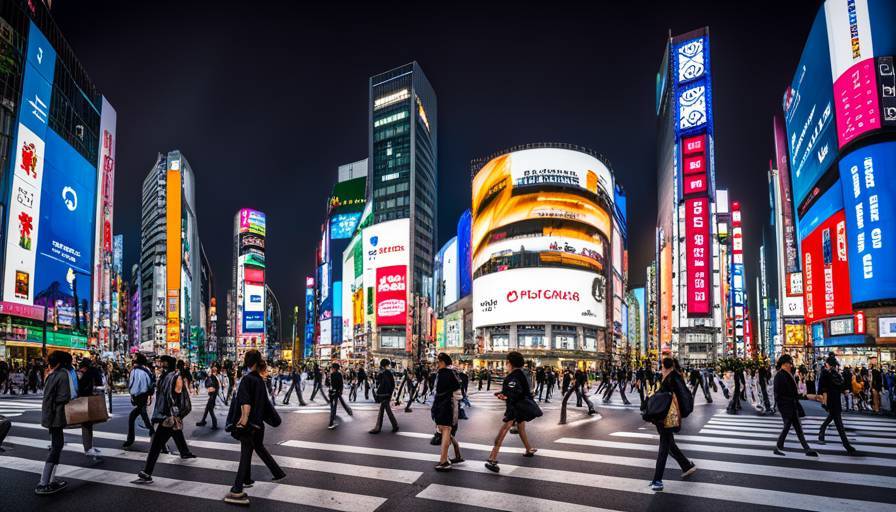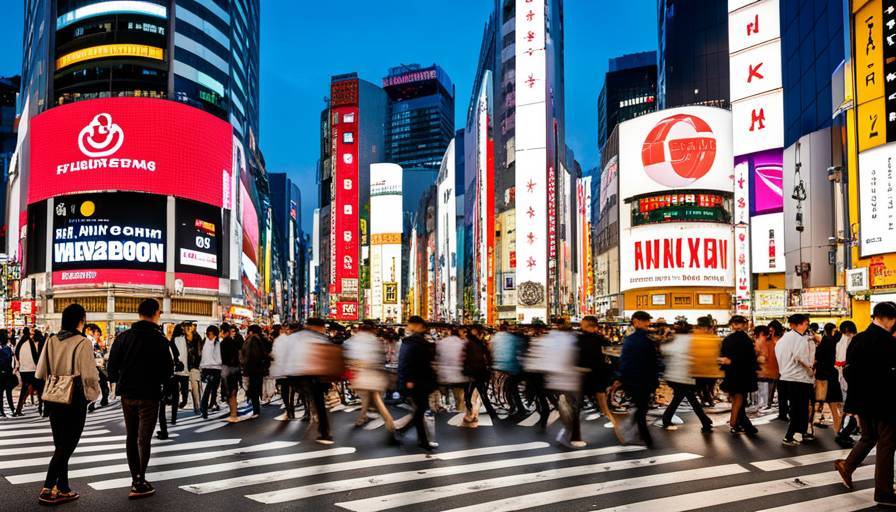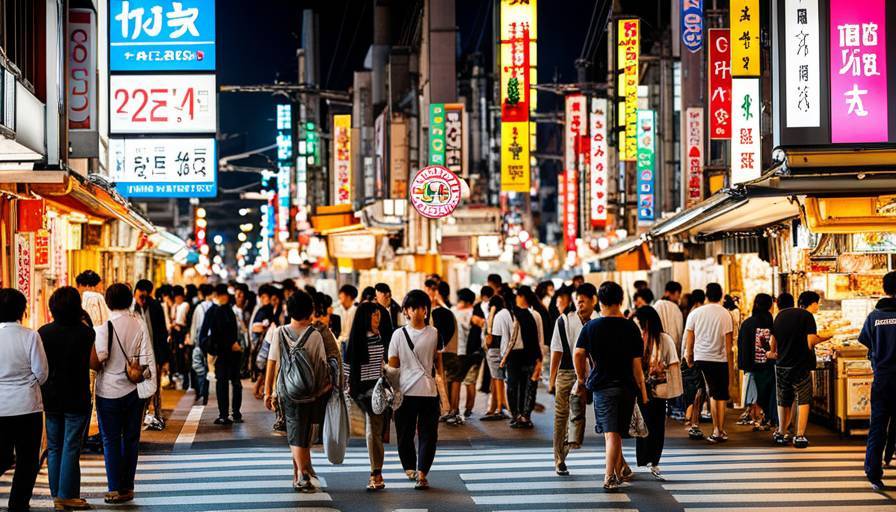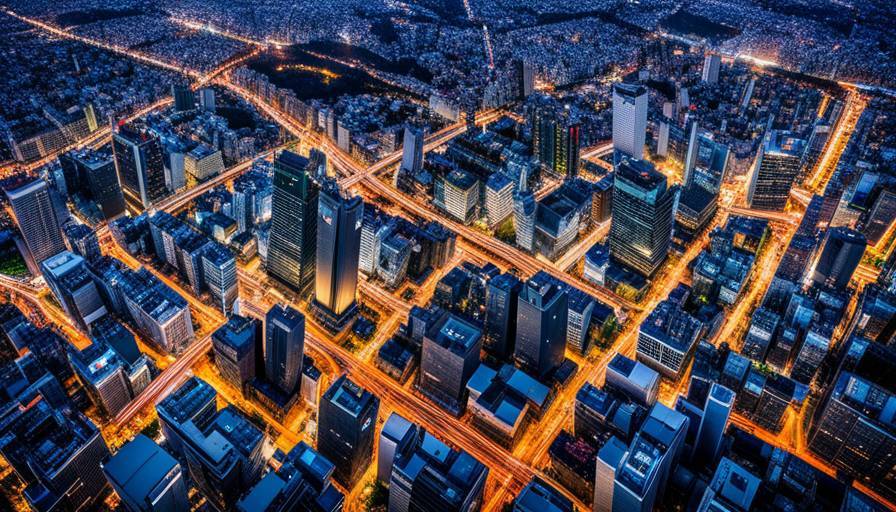Tokyo, a city of contradiction where the ultramodern and the traditional intertwine, is a world unto itself—bursting with vibrant life, cutting-edge technology, fascinating history and culture that never stops to amaze. From sacred Shinto shrines nestled in neon-lit skyscrapers to gastronomic delights on every corner, this bustling metropolis offers an awe-inspiring blend of all the best parts of Japan. Secure your virtual boarding pass and dive into our curated list of top 10 places that you absolutely must visit when in Tokyo. We promise these selections will make your journey unforgettable—and have you yearning for a return ticket!
Tokyo is a vibrant city with many must-see attractions, including famous historical sites such as Sensoji Temple and Meiji Jingu Shrine, relaxing spaces like Hamarikyu Gardens, and modern landmarks such as Tokyo Skytree and Odaiba. Visitors can also find unique spots like Jiyugaoka, Daikanyama, Shinbashi, and Kichijoji. For anime and manga fans, neighborhoods like Ikebukuro, Nakano, and Akihabara offer numerous shops dedicated to these popular cultural phenomena. Transportation options for sightseeing include tourist buses like Hato Bus and SKY BUS, train passes such as Suica and PASMO IC cards, as well as bus and taxi services.
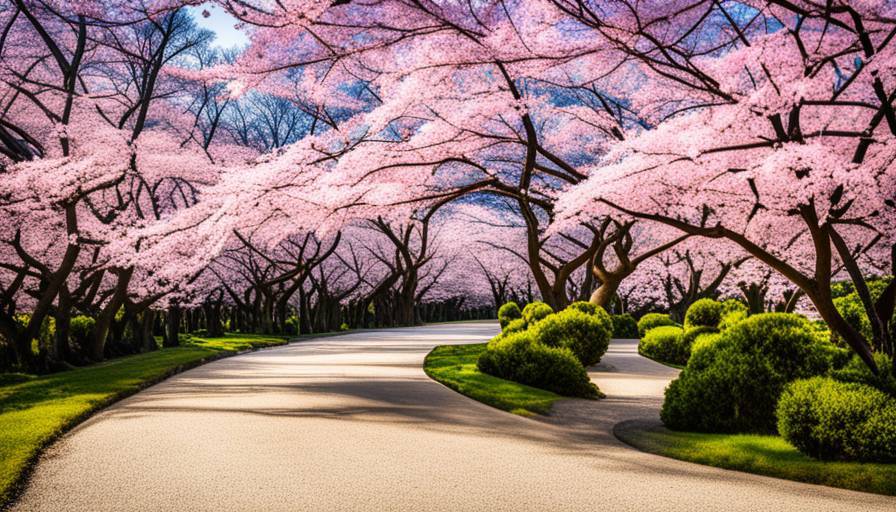
Discovering Tokyo’s Must-See Historical Sites
When exploring Tokyo, it’s impossible to ignore the rich history that permeates the city. From ancient temples to serene gardens, the historical sites in Tokyo offer a glimpse into the country’s captivating past. By immersing yourself in these cultural landmarks, you can develop a deeper understanding of Japan’s traditions and heritage.
One of the top historical sites to visit in Tokyo is Sensoji Temple in Asakusa. This iconic Buddhist temple, built in the 7th century, stands as a testament to centuries of reverence and spirituality. As you approach the temple grounds, you’ll be greeted by the grandeur of the Kaminarimon Gate, adorned with a massive red lantern that serves as a symbol of good luck. As you walk along Nakamise Dori, a lively shopping street leading to the main temple, you’ll find a variety of traditional souvenirs and local delicacies.
Once inside Sensoji Temple, take a moment to pause and soak in the serene atmosphere. The main hall houses an impressive golden statue of Kannon Bodhisattva, the goddess of mercy. Many visitors participate in rituals like burning incense and throwing coins into donation boxes while offering prayers for health, happiness, and success.
Every year, Sensoji Temple attracts millions of tourists and locals who seek solace or simply want to experience its awe-inspiring beauty. The energy surrounding this historical site is palpable, drawing people from all walks of life together in unity.
Now that we’ve explored discovering Tokyo’s must-see historical sites and learned about Sensoji Temple, let’s delve deeper into its significance as an icon of Asakusa.
Sensoji Temple: An Icon of Asakusa
Nestled within the vibrant district of Asakusa, Sensoji Temple serves as an enduring symbol of Tokyo’s past and a spiritual sanctuary for locals and tourists alike. Legend has it that the temple was discovered when two brothers fished a golden statue of Kannon Bodhisattva from the nearby Sumida River. This event sparked the creation of the temple and its subsequent rise in popularity.
As you approach Sensoji Temple, your attention will undoubtedly be drawn to the imposing Kaminarimon Gate standing proudly at the entrance. Its striking red color and intricate design make for an ideal photo opportunity. Passing through this gate marks the transition into a world steeped in tradition and history.
Walking down Nakamise Dori, flanked by shops selling traditional crafts and delectable street food, provides a unique cultural experience. Embrace the bustling atmosphere as you browse through stalls offering souvenirs such as wooden keychains, beautiful kimono fabrics, and mouth-watering snacks like freshly grilled rice crackers and sweet manju buns.
Once you reach the main hall of Sensoji Temple, be prepared to be mesmerized by its grandeur. Pause to take in the intricate details of the architecture, intricately carved wooden beams, and awe-inspiring statues. Visitors are often seen lighting incense sticks and offering prayers for their personal wishes before proceeding inward.
Whether you’re seeking spiritual solace or simply want to immerse yourself in Tokyo’s rich heritage, Sensoji Temple is a must-visit destination. Its timeless beauty and cultural significance make it a true icon of Asakusa.
Meiji Jingu: A Century-Old Spiritual Oasis
Nestled in the heart of Tokyo, Meiji Jingu is a serene and enchanting Shinto shrine that serves as a spiritual oasis amidst the bustling city. Built in 1920 to honor the Emperor Meiji and Empress Shoken, this iconic shrine celebrates its 100th anniversary in 2020.
Imagine stepping through the towering wooden torii gate, leaving behind the noise and chaos of modern Tokyo. As you traverse the tranquil forest path, shaded by ancient trees, a sense of peace washes over you. It’s as if time slows down, allowing for introspection and connection with nature.
Meiji Jingu offers a glimpse into Japan’s rich cultural heritage. The main shrine building itself is an architectural marvel, exuding simplicity and elegance. Its stunning cypress construction harmonizes perfectly with the surrounding natural setting, creating an atmosphere of serenity. Visitors often pay their respects at the main hall, offering prayers or purchasing ema (wooden plaques) on which they write their wishes.
Beyond the main shrine lies the expansive Meiji Jingu Inner Garden, a hidden sanctuary within bustling Tokyo. Stroll along well-maintained paths lined with vibrant seasonal flowers, experiencing the beauty of nature in every step. A visit during springtime reveals breathtaking displays of blooming azaleas and irises, while autumn delights with fiery hues of maple leaves.
Personal anecdote: I remember visiting Meiji Jingu during cherry blossom season, when thousands of delicate pink blooms adorned the trees. The sight was simply breathtaking – a sea of blossoms drifting gently in the breeze. It was a moment of pure tranquility that I will forever cherish.
Immerse yourself in traditional Japanese culture by participating in activities such as temizu (ritual purification) at the stone water basin or witnessing traditional wedding ceremonies held at the shrine. Throughout the year, Meiji Jingu also hosts various festivals, offering visitors a chance to witness captivating performances and cultural displays.
Now that we’ve explored the serenity of Meiji Jingu, let’s delve into the vibrant tapestry of Tokyo’s unique neighborhoods and uncover their hidden charms.
- Meiji Jingu, a Shinto shrine located in the heart of Tokyo, is a serene and enchanting spiritual oasis that celebrates its 100th anniversary in 2020. The shrine offers a glimpse into Japan’s rich cultural heritage with its stunning architecture, tranquil forest paths, and expansive inner garden filled with seasonal flowers. Visitors can participate in traditional activities and witness cultural displays during various festivals held throughout the year. Meiji Jingu is a must-visit destination for anyone seeking a moment of pure tranquility amidst the bustling city.
Exploring Tokyo’s Unique Neighborhoods
While well-known attractions like Shibuya Crossing and Tokyo Skytree often steal the spotlight, it would be a disservice not to venture beyond these tourist magnets and explore Tokyo’s authentic neighborhoods. These districts offer a glimpse into the city’s diverse culture, architectural wonders, and hidden gems.
One such neighborhood is Jiyugaoka – a stylish enclave brimming with fashionable boutiques, charming cafes, and picturesque streets. As you wander through this chic district, you’ll be captivated by its European-inspired atmosphere and quaint shops that invite exploration. Indulge in delectable treats at artisanal bakeries or sip on a cup of aromatic coffee while enjoying the laid-back ambiance.
Just a short distance away lies Daikanyama – a trendy neighborhood known for its unique blend of sophistication and urban coolness. This fashionable district attracts artists, designers, and creatives who revel in its hip vibes. Discover independent boutiques showcasing trendy fashion, art galleries exhibiting contemporary masterpieces, and cozy bookstores perfect for literary enthusiasts seeking literary treasures.
Both Jiyugaoka and Daikanyama offer respite from the intensity of big city living while providing an opportunity to immerse yourself in Tokyo’s vibrant street culture. Explore these neighborhoods at your own pace, take in their distinct flavors, and appreciate the multitude of experiences they have to offer.
While Jiyugaoka and Daikanyama are undoubtedly enticing, Tokyo boasts many more unique neighborhoods waiting to be discovered. Let’s continue our exploration of these hidden gems as we wander through the diverse tapestry of this fascinating city.
Hidden Gems of Jiyugaoka and Daikanyama
When exploring Tokyo, it’s easy to get caught up in the bustling crowds and iconic tourist spots. However, those looking for a more offbeat and local experience should venture into the charming neighborhoods of Jiyugaoka and Daikanyama. Tucked away from the typical tourist radar, these hidden gems offer a unique blend of trendy vibes, boutique shops, and picturesque streets.
Jiyugaoka, located just south of Shibuya, exudes a calm and cozy atmosphere reminiscent of European towns. Its tree-lined streets are dotted with stylish cafes, exquisite patisseries, and themed boutiques. As you wander through this neighborhood, you’ll notice the attention to detail in every corner, from the beautifully designed storefronts to the carefully curated displays.
One must-visit spot in Jiyugaoka is the Todoroki Ravine Park, a serene sanctuary featuring a scenic walking trail surrounded by lush greenery. This hidden oasis feels worlds away from the hustle and bustle of Tokyo’s city center and provides a peaceful escape for nature lovers.
Daikanyama, on the other hand, offers a more sophisticated and bohemian ambiance. Known as Tokyo’s “Little Brooklyn,” this area is cherished for its hipster culture, independent boutiques, and trendy cafes. The streets are lined with fashion-forward shops that cater to diverse tastes, showcasing both local designers and international brands.
For book enthusiasts, Daikanyama is home to Tsutaya Books, a renowned bookstore that goes beyond conventional expectations. Here you can browse an extensive collection of books while sipping a cup of coffee in their cozy reading spaces or rooftop garden. It’s an oasis for literary lovers seeking inspiration or simply searching for a moment of tranquility amidst the city’s constant buzz.
Both Jiyugaoka and Daikanyama offer an intimate glimpse into Tokyo’s local life. Stroll through the neighborhoods’ narrow alleys, discover hidden boutiques, and indulge in delicious treats at charming cafes along the way. Whether you’re a fashion enthusiast, a food lover, or simply seeking a quieter side of Tokyo, these hidden gems will provide a refreshing break from the city’s more popular attractions.
- In 2019, Sensoji Temple was the most visited religious site in Tokyo with close to 30 million visitors.
- The Meiji Jingu Shrine had an estimated 8 to 10 million guests annually prior to the COVID-19 pandemic according to data from Japan’s tourism board.
- Meanwhile, Hamarikyu Gardens reported around 2 million visitors yearly before the pandemic hit, making it one of the top visited green spaces in the city.
The Allure of Tokyo’s Shopping Districts
Tokyo is renowned worldwide for its diverse and vibrant shopping scene. From high-end luxury brands to quirky streetwear, there is something for every budget and taste. Exploring Tokyo’s shopping districts is not just about purchasing items; it’s an immersive experience that reflects the city’s unique blend of tradition and innovation.
Shinjuku stands as one of Tokyo’s major shopping hubs. Towering department stores like Isetan and Takashimaya offer an extensive selection of local and international brands. For those seeking trendy and affordable fashion, head to Takeshita Street in Harajuku, where you’ll find an array of offbeat shops selling everything from vintage clothing to colorful accessories.
For electronics enthusiasts, Akihabara is a must-visit destination. Known as Tokyo’s “Electric Town,” this district is teeming with electronic goods shops, anime merchandise outlets, maid cafes, and arcades. It’s a paradise for gaming enthusiasts, anime lovers, and tech-savvy individuals alike.
If you’re feeling lucky or looking for some entertainment, Ginza offers a wide range of upscale shopping options alongside traditional theaters and exclusive casinos. Sample exquisite Japanese craftsmanship at prestigious jewelry stores or explore flagship stores of renowned international brands.
Some may argue that Tokyo’s shopping districts are too crowded or overwhelming. While it’s true that certain areas can be crowded during peak hours, that doesn’t mean you can’t find quieter moments or hidden gems within these bustling spaces. The key is to plan your visit during off-peak hours or explore smaller side streets where you can stumble upon unique boutiques and local artisans.
Tokyo’s shopping districts are not limited to just fashion and electronics. They also offer culinary delights. As you explore Shibuya, make sure to visit the famous Shibuya Crossing but then venture into the side streets to discover hidden izakayas and small food stalls serving delectable street food.
From the trendy neighborhoods of Harajuku and Omotesando to the traditional streets of Asakusa, Tokyo’s shopping districts cater to a wide range of interests and preferences. Whether you’re seeking luxury brands, quirky fashion, unique souvenirs, or a taste of local cuisine, these districts offer an unforgettable shopping experience.
Shopping in Tokyo: From Ikebukuro to Akihabara
Tokyo is a shopaholic’s paradise, offering a diverse range of shopping experiences that cater to all tastes and interests. From trendy fashion districts to specialized stores for anime and electronic enthusiasts, the city has it all. Two prominent shopping destinations in Tokyo that shouldn’t be missed are Ikebukuro and Akihabara.
Ikebukuro, known as one of Tokyo’s major commercial districts, offers a unique blend of shopping options. The Sunshine City complex is a must-visit, housing numerous department stores like Lumine and Seibu, where you can find the latest fashion trends and luxury brands. Don’t forget to explore the bustling streets surrounding Ikebukuro Station, where you’ll stumble upon hidden gems like Animate – an anime merchandise heaven – and Book Off – a paradise for bookworms and second-hand enthusiasts.
Shifting gears to the electrifying district of Akihabara, you’ll find yourself immersed in a world of electronics and otaku culture. Akihabara is renowned for its countless shops selling everything from computer components to retro video games, manga, and collectibles. Whether you’re a tech enthusiast seeking the latest gadgets or an anime fan searching for rare figurines or cosplay accessories, Akihabara will undoubtedly satisfy your cravings.
Picture yourself strolling through the vibrant streets of Akihabara, surrounded by enormous electronic billboards showcasing the latest gaming releases and cosplayers showcasing their imaginative costumes. As you step into one of the multi-story arcades filled with rows upon rows of claw machines promising plush toy treasures, your heart races with anticipation.
It’s important to note that exploring these shopping districts goes beyond just making purchases. It’s also about immersing oneself in the vibrancy and unique subcultures that each area offers. So take your time, soak in the atmosphere, and indulge in a little retail therapy amidst Tokyo’s bustling streets.
After indulging in some retail therapy, let’s take a moment to step away from the urban frenzy and explore Tokyo’s culturally rich gardens.
A Peek at Tokyo’s Culturally Rich Gardens
Amidst the city’s hustle and bustle, Tokyo hides pockets of tranquility in its breathtaking gardens. These beautifully manicured green spaces serve as sanctuaries where visitors can escape from the urban chaos and immerse themselves in nature’s serenity.
One such example is the Hamarikyu Gardens, located near Tokyo Bay. This 17th-century garden offers a peaceful oasis with its picturesque landscapes, traditional teahouses, and a large pond that harmoniously blends with the surrounding skyscrapers. As you meander along winding paths adorned with cherry blossom trees or admire the elegant stone bridges spanning over tranquil waters, you can’t help but feel a sense of calm wash over you. The juxtaposition of nature and modernity creates an enchanting experience unique to Tokyo.
Another must-see garden is the Koishikawa Korakuen Garden, which dates back to the early Edo period. This historic gem captivates visitors with its meticulously crafted landscape showcasing various elements of traditional Japanese gardening. From graceful water features to vibrant seasonal flowers and strategically placed pavilions, every aspect of this garden tells a story of harmony and balance between man-made design and natural beauty.
The Meiji Jingu Gyoen, situated adjacent to Meiji Jingu Shrine, is yet another noteworthy garden worth exploring. With its vast open spaces, dense forests, and meticulously trimmed lawns, this expansive park provides ample opportunities for leisurely walks or serene picnics under towering trees. As you stroll along tree-lined avenues and soak up the peaceful ambiance, it’s easy to forget that you’re in one of the busiest cities in the world.
Tokyo’s gardens offer not only a glimpse into the city’s rich cultural history but also a chance to find solace and rejuvenation amidst the vibrant urban landscape. Let’s further explore more must-see attractions and sightseeing spots in Tokyo.
Hamarikyu Gardens: A Departure from Urban Frenzy
Amidst the hustle and bustle of modern Tokyo, the serene Hamarikyu Gardens offer a tranquil oasis for visitors. Located along the waterfront in the heart of the city, these gardens provide a welcome respite from the urban frenzy, allowing one to escape into nature’s embrace. As you enter through the grand Otemon Gate, you’ll immediately be captivated by the striking scenery that unfolds before your eyes.
The gardens are meticulously landscaped with an extensive variety of plants and trees, including stunning cherry blossoms that blanket the surroundings with delicate hues during springtime. Strolling along the mesmerizing pathways, you’ll discover traditional teahouses perched on picturesque islands surrounded by tranquil lakes. These teahouses offer a unique opportunity to experience a traditional Japanese tea ceremony, immersing yourself in the rich cultural heritage of Japan.
Imagine sitting inside a teahouse, sipping matcha tea and relishing wagashi (traditional Japanese sweets) while taking in the breathtaking views of the garden’s harmonious blend of water features and meticulously pruned trees. The experience is undoubtedly both peaceful and rejuvenating.
Another highlight of Hamarikyu Gardens is its connection to Tokyo Bay. At high tide, seawater flows into the garden’s central lake via an intricate system of canals. This creates a stunning dynamic where water merges with land, offering a unique perspective on nature’s ever-changing beauty.
If you’re seeking an escape from Tokyo’s urban frenzy and crave a serene experience in nature, Hamarikyu Gardens is undeniably a must-visit attraction that should not be missed.
Maximizing Your Tokyo Visit: Travel and Accommodation Tips
Planning a trip to Tokyo can be both exciting and overwhelming given the city’s vast offerings. To help you make the most of your visit, here are some valuable travel and accommodation tips.
When it comes to getting around Tokyo, the city’s efficient and extensive public transportation system is your best friend. The Tokyo Metro and JR Yamanote Line connect major attractions and neighborhoods, making it easy to navigate the city. Consider purchasing a Suica card or a Pasmo card, rechargeable IC cards that allow for convenient transfers between trains and buses.
If you want to immerse yourself in the vibrant energy of Tokyo, consider staying in popular districts like Shibuya or Shinjuku. These areas are known for their vibrant nightlife, shopping opportunities, and an abundance of restaurants serving a variety of mouthwatering Japanese cuisine.
However, if you prefer a more serene atmosphere away from the bustling crowds, consider staying in neighborhoods like Ginza or Asakusa. Ginza offers upscale shopping experiences and is known for its luxury brand stores, while Asakusa provides a glimpse into old Tokyo with its traditional streets and historic Senso-ji Temple.
Whether you choose a luxury hotel, a traditional ryokan, or even opt for budget accommodations like capsule hotels or guesthouses, be sure to book in advance as Tokyo is a popular tourist destination year-round.
Lastly, don’t forget to experience Tokyo’s vibrant food scene. From Michelin-starred restaurants to humble street stalls, this city has something to offer every palate. Don’t be afraid to try local delicacies like sushi, ramen, tempura, or yakitori.
By following these travel and accommodation tips, you’ll be well-prepared to maximize your time in Tokyo, ensuring that your visit is an unforgettable one.
